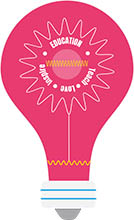Episode 29 took a nostalgic look at three events that helped shape my knowledge and understanding of wine. With the help of a kindly French waiter, and some Beaujolais, I found a new beverage to enjoy with food besides beer. And, despite my attraction to Burgundy and Pinot Noir, I discovered the pleasures of aged Bordeaux and Cabernet Sauvignon. Lastly, at a mountain restaurant in northern Italy, I was introduced to the depth and diversity of Italian wine.
In this final episode of "My Life in Wine," two events come to mind that include bookends enclosing the many years of learning and appreciation. The "Then" was a tasting of eye-opening wines that set a personal course of wine discovery for the future and the "Now" was the gratifying experience that comes from teaching about tasting and evaluating wine and seeing first the smile, then a nod of the head and finally, the moment when it clicks.
Then
In the 1970s, wine awareness in Colorado was just beginning to take shape. There was a store in downtown Denver where you could buy California wine for less than it sold for in California. Colorado boasted of one winery then in an old warehouse along the Platte River. Vineyards were struggling with winter kill on the Western Slope and a wine tasting group was taking shape known as "The Grape Nuts."
Recognizing the growing interest in wine by its readers, the Rocky Mountain News hired me to write a weekly wine column. Jack Daniels (not that Jack Daniels), worked for a local wine distributor then and was the founder of The Grape Nuts. Jack saw my column and invited me to one of the group's tastings.
It was Daniels' turn to supply the wine the night I attended. He selected six red Burgundies from the famous Dr. Barolet Collection. Dr. Arthur Barolet was an early 20th century physician from Burgundy with a passion for making and collecting wine. His vast collection, which dated back to the early 1920s, included such wines as 1935 Clos Vougeot, 1937 Vosne Romanee and 1923 Hospice de Beaune Cuvee Fonguerand.
Dr. Barolet enjoyed making his own wine and some of them were part of his collection when he died. He also liked to refresh aging wines with a little brandy, a practice that was not uncommon in those days. The brandy lifted the wine's tiring flavors and gave it a little more life.
The Barolet Burgundies we had that night in Denver are lost in my memory, but the tasting is not. Even after 40 years and a lot traveling, the wines were inviting and balanced. Although one or two were quickly passing old age, most of them were still showing deep textured black cherry and ripe plum, soft tannins, good acidity and length. No doubt, the longevity of these wines was helped by the brandy.
I came away from that tasting with a lasting appreciation for mature wines and the need to age certain red wines. Barolet wines pop up at auctions or through private sales, now and then. By now, though, they are curiosities and buyers should beware.
Now
Near the end of my active wine writing career in northern California, a friend suggested I teach about wine. He mentioned my name and background to the head of a wine studies program at the local junior college and at the start of the next semester, I was in the classroom where I stayed for 13 years.
My first class was in 2003 and I was surprised at the demand for wine knowledge. Students came from a range of backgrounds and ages, including a few underage teenagers who tried to game the system and one man who told me in confidence that he was a recovering alcoholic eager to learn about wine and that he would just smell the wines during our class tastings.
The evening classes consisted of a lecture and a tasting of relevant wines. It was during the tastings when the bond between teacher and student had its highest value, especially when students were prompted to describe what they were smelling and tasting.
Even the vaguest description was discussed, as we explored the wines together. True to his word, the recovering alcoholic smelled all of the wines, adding some relevant and helpful observations.
If someone thought they detected mint, I would explain the difference between peppermint and eucalyptus, a component often confused with mint. Or, we would examine the subtle differences between lemon zest, the white pith and the juice.
To illustrate the difficulty of describing a wine in terms that others will understand, I would ask the class to describe the smell and taste of a banana or licorice. Everyone knew what a banana smelled and tasted like, from personal experience, but they could only come up with, "Um...banana!"

Seeing the look on a student's face as they finally were able to put a name to what they were smelling and tasting, was the gratifying understanding of the teaching moment.
The satisfaction of being able to pass along my knowledge of wine was, for me, a fit way to end "My Life in Wine." But I hope you will continue to enjoy "Gerald D Boyd on Wine" and will tell your friends.
Next blog: Sparkling Cava
Leave a comment of write me at boydvino707@gmail.com




